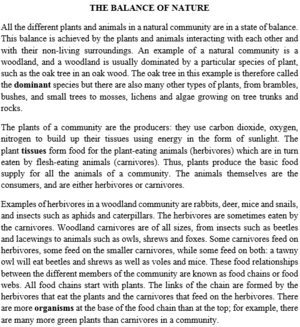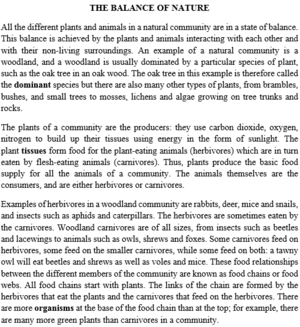Read the following passage and mark the letter A, B, C, or D to indicate the correct answer to each of the question.
The day after Thanksgiving is the start of the holiday shopping season. Thanksgiving is always on a Thursday, so the day after is a Friday. This day has come to be known as Black Friday. It has been the busiest shopping day of the year since 2005.
Most stores offer great deals on Black Friday. They open their doors in the wee hours of the
morning. They try to attract shoppers with big discounts. Some items like TVs are much cheaper than usual. Stores may even lose money on these items. They hope that shoppers will buy gifts for other people while they are in the store.
Black Friday is a great time to get good deals. The problem is that there are not enough low-priced items to go around. Each store may only have a few. These items are in high demand. People stand in long lines to get such great deals. They may line up hours before a store opens. They may be hoping to get a low price on a TV or laptop, but not everyone who wants one will get one. Some people leave disappointed. The situation can be tense. Some Black Friday events have been Violent. Large, eager crowds have trampled workers. Fights have broken out or people have been cutting in line. People have shot one another over parking spots. But most Black Friday events are safe and fun. Still, if you plan on going, expect large crowds and a bit of shoving.
Which is NOT true about Black Friday?
A. Black Friday is always the day after Thanksgiving.
B. Black Friday is the busiest shopping day of the year.
C. Black Friday is a national holiday.
D. Black Friday has been a little dangerous and uncomfortable.









Đáp án C
Điều nào dưới đây không đúng về Black Friday?
A. Black Friday luôn luôn là ngày sau Lễ Tạ ơn.
B. Black Friday là ngày mua sắm bận rộn nhất trong năm.
C. Black Friday là một ngày lễ quốc gia.
D. Black Friday đã từng có chút nguy hiểm và không thoải mái.
Căn cứ vào thông tin sau trong đoạn văn:
- “The day after Thanksgiving is the start of the holiday shopping season. Thanksgiving is always on a Thursday, so the day after is a Friday. This day has come to be known as Black Friday. It has been the busiest shopping day of the year since 2005.” (Một ngày sau Lễ Tạ ơn là bắt đầu mùa mua sắm. Lễ
Tạ ơn luôn vào Thứ Năm, vì vậy ngày sau là Thứ Sáu. Ngày này đã được gọi là Thứ Sáu Đen. Đó là ngày mua sắm bận rộn nhất trong năm kể từ năm 2005.)
=> Ta loại phương án A, B.
- "The problem is that there are not enough low-priced items to go around. Each store may only have a few. These items are in high demand. People stand in long lines to get such great deals. They may line up hours before a store opens. They may be hoping to get a low price on a TV or laptop, but not everyone who wants one will get one. Some people leave disappointed. The situation can be tense. Some Black Friday events have been violent. Large, eager crowds have trampled workers. Fights have broken out or
people have been cutting in line. People have shot one another over parking spots." (Vấn đề là không có đủ các mặt hàng giá thấp để ngắm nghía. Mỗi cửa hàng có thể chỉ có một vài thứ. Những mặt hàng này đang có nhu cầu cao. Mọi người đứng thành hàng dài để có được những giao dịch tuyệt vời như vậy. Họ có thể xếp hàng hàng giờ trước khi một cửa hàng mở. Họ có thể đang hy vọng sẽ có được TV hoặc máy tính xách tay với giá thấp, nhưng không phải ai muốn một có cái gì sẽ được cái đó. Một số người thất vọng bỏ về. Tình hình có thể căng thẳng. Một số sự kiện Thứ Sáu Đen đã diễn ra bạo lực. Đám động lớn, háo hức đã giẫm đạp nên các nhân viên. Các trận đánh nhau đã nổ ra hoặc mọi người cắt hàng. Mọi người đã bắn nhau ở các điểm đỗ xe.)
=> Ta loại phương án D